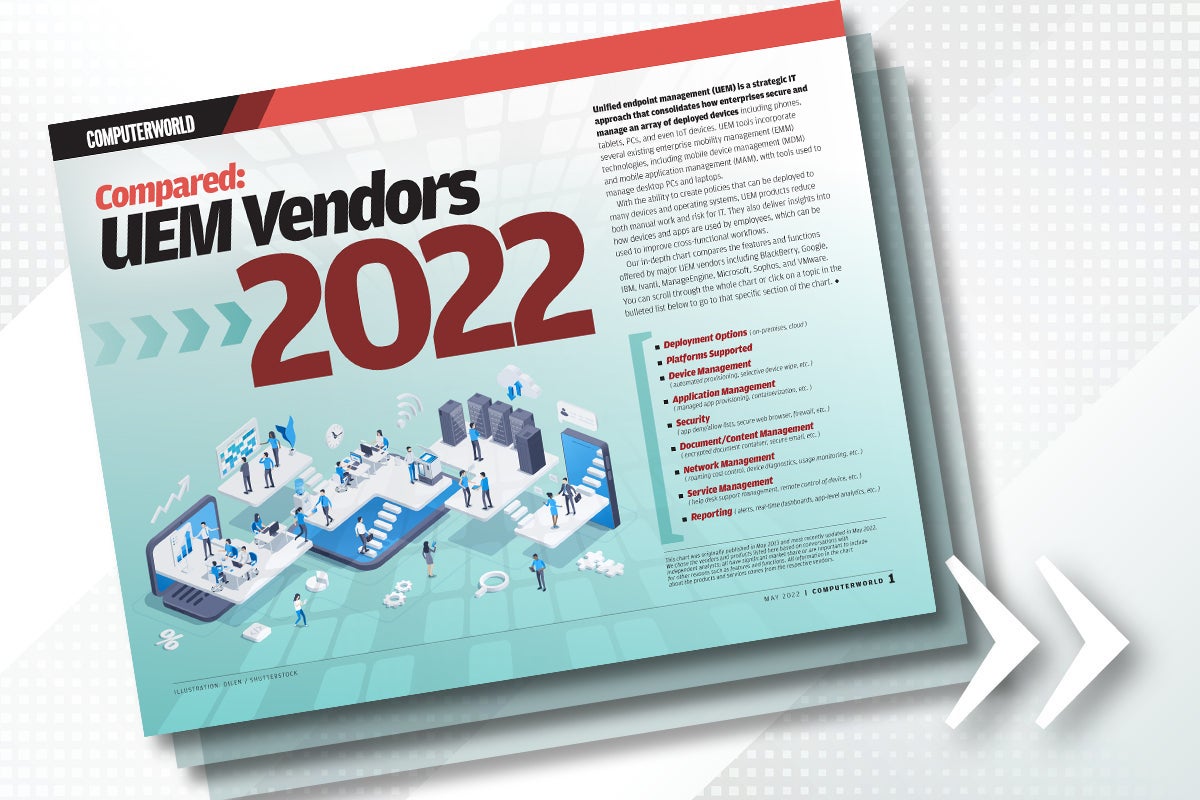Download: UEM vendor comparison chart 2022

Credit to Author: Bob Violino, Valerie Potter| Date: Tue, 03 May 2022 03:00:00 -0700
Unified endpoint management (UEM) is a strategic IT approach that consolidates how enterprises secure and manage an array of deployed devices including phones, tablets, PCs, and even IoT devices.
As remote and hybrid work models have become the norm over the past two years, “mobility management” has come to mean management of not just mobile devices, but all devices used by mobile employees wherever they are. UEM tools incorporate existing enterprise mobility management (EMM) technologies, such as mobile device management (MDM) and mobile application management (MAM), with tools used to manage desktop PCs and laptops.
Like the EMM suites they evolved from, UEM platforms help companies secure their mobile infrastructure, as well as control device policies and manage mobile apps, content, networks, and services. UEM tools merge those capabilities with functionality typically found in client management tools (CMTs) used to manage desktop PCs and laptops on a corporate network.
With the ability to create policies that can be deployed to many devices and operating systems, UEM products reduce both manual work and risk for IT. They also deliver insights into how devices and apps are used by employees, which can be used to improve cross-functional workflows.
To continue reading this article register now
Learn More Existing Users Sign In